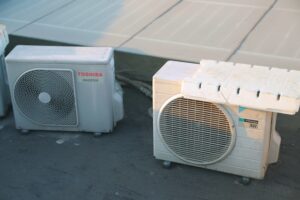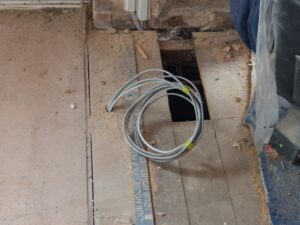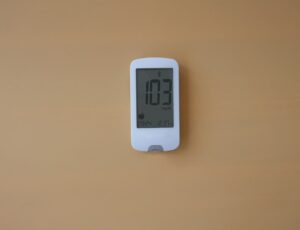If you’re tired of fighting with the thermostat to get comfortable, HVAC zoning might be the solution you didn’t know you needed. HVAC zoning allows you to control the temperature in different areas of your home separately, ensuring comfort exactly where you want it. This means less arguing over thermostat settings and more energy efficiency for your home.
Think of HVAC zoning as creating personalized climate zones in your house. Instead of heating or cooling the entire home, you decide which rooms need more or less air. It’s a smart way to save on energy and improve comfort.
Excel Mechanical specializes in making sure your HVAC system is set up to give you the most comfort and value.
Excel Mechanical excels in providing top-notch HVAC and plumbing services. Our team designs systems tailored to fit your needs and budget, ensuring you get the perfect setup for your home or business.
Understanding HVAC Zoning
HVAC zoning helps you control temperatures in different areas of your home or office. It works by using multiple thermostats connected to a central system. This setup lets you adjust temperatures independently in each zone, giving you comfort and energy savings.
A basic HVAC zoning system includes:
- Thermostats: Control temperature for each zone.
- Dampers: Open and close to control air flow.
- Control Panel: Connects thermostats and dampers.
With zoning, you can heat or cool only the rooms you use. This reduces energy waste and keeps everyone comfortable. For example, you can keep bedrooms cooler while heating the living room during winter.
Excel Mechanical is your top choice for HVAC zoning. Our experts provide quality and value, creating systems tailored to your needs and budget. We handle both residential and commercial projects with precision and care.
By using zoning, you enhance comfort and save on energy bills. Each zone can have its perfect temperature setting, avoiding hot or cold spots. This makes your home or office pleasant year-round.
Choose Excel Mechanical for reliable HVAC and plumbing services. We ensure you get the best system for your situation, maximizing efficiency and comfort.
The Mechanics of Zoning Systems
HVAC zoning systems improve comfort by dividing a building into different zones, allowing individual temperature control. Key components include control panels, thermostats, sensors, and dampers, which work together to manage the airflow to each zone.
Zoning Control Panels
Zoning control panels are the brains of the system. They monitor and adjust the operation of the HVAC equipment based on each zone’s temperature needs. These panels connect all the components, coordinating the operation of dampers and communicating with thermostats and sensors.
Control panels can handle multiple zones, making them flexible for various building sizes. They optimize energy use by only heating or cooling areas as needed. This helps reduce energy costs while maintaining comfortable temperatures for different zones.
By installing a system from Excel Mechanical, you ensure professional setup and reliable operation.
Thermostats and Sensors
Thermostats and sensors are essential for precisely managing each zone’s climate. Thermostats allow you to set desired temperatures, giving you control over comfort levels in each area. Sensors monitor actual temperatures and relay this information to the control panel.
Modern thermostats often include smart features, such as remote access via smartphones and the ability to learn your schedule. This makes managing your HVAC system more convenient and efficient. Correct placement of thermostats and sensors ensures accurate readings and effective climate control.
A well-designed system from Excel Mechanical brings you comfort with exceptional quality and great value.
Dampers and Actuators
Dampers regulate airflow to different zones, opening or closing to direct air as needed. Actuators control these dampers, responding to signals from the control panel. Together, they ensure that each zone receives the right amount of air.
There are different types of dampers like motorized or pneumatic, each suited for particular setups and preferences. Proper installation ensures smooth operation, minimizing wear and tear on the system.
These components contribute to increased efficiency and reduced energy consumption. They allow specific targeting of heating and cooling, enhancing comfort in every part of your home or business.
Benefits of HVAC Zoning
HVAC zoning offers several significant advantages for your home or business. It helps you save energy, provides a more comfortable living and working environment, and extends the lifespan of your HVAC system. Exploring these benefits helps you understand why HVAC zoning could be a smart investment.
Energy Efficiency
With HVAC zoning, you can control temperatures in different areas, or “zones,” of your building separately. This system means you don’t have to heat or cool unused areas, which leads to noticeable energy savings. By adjusting the temperature in only the necessary spaces, you reduce energy waste.
For instance, during the night, you can set your living room thermostat lower while maintaining a comfortable temperature in the bedrooms. Over time, this targeted approach can lower your energy bills significantly. Excel Mechanical specializes in creating efficient HVAC solutions tailored to your layout and usage patterns, ensuring cost-effective performance.
Customized Comfort
HVAC zoning allows you to set different temperatures in different zones. This customization can please everyone, meeting personal comfort preferences without conflict. For instance, some family members might prefer a cooler bedroom while others like a warmer office space.
Zoning gives you the flexibility to adjust each area based on specific needs. If you’re hosting guests, you can easily adjust the climate in their rooms without affecting the rest of the house. Excel Mechanical ensures that each zone’s settings can be controlled effortlessly, maximizing comfort tailored to individual preferences.
Extended HVAC Lifespan
By using zoning to control temperature specifically where and when needed, your HVAC system faces less strain. This targeted usage means the system doesn’t have to work as hard or as often, leading to less wear and tear.
As a result, HVAC components can last longer, reducing the frequency of costly repairs or replacements. This can be especially beneficial in larger homes or businesses where uneven usage patterns can otherwise stress the system. Excel Mechanical provides expert guidance and installation to ensure your system is both effective and long-lasting, offering excellent value for your investment.
Designing a Zoned HVAC System
When designing a zoned HVAC system, it’s important to think about the number of rooms and their usage. You also need to calculate the energy needs for each area and create effective duct paths. A thoughtful plan ensures comfort and efficiency.
Zoning Layout Planning
Decide which areas, or zones, in a building need separate climate control. Rooms that get a lot of sunlight or have different functions, like kitchens and bedrooms, might need distinct zones. Consider room uses and occupancy patterns.
Create a map of the space to determine logical zones. This helps ensure each area’s needs are met. Use zone control panels for tailored environments. Choose thermostats for each zone to provide accurate temperature management. Excel Mechanical can assist in creating a precise zoning map to fit your unique layout.
Load Calculations
Calculate the heating and cooling load for each zone. This refers to the amount of energy needed to heat or cool a space effectively. Loads depend on factors like room size, number of windows, and insulation quality. Assessments help determine the needed HVAC capacity.
Make sure to account for seasonal changes. Use software or consult with an expert to perform accurate calculations. Proper load calculations prevent oversized systems, which can cycle on and off too frequently. Excel Mechanical offers expert load assessments to ensure efficiency and cost-effectiveness.
Ductwork Considerations
Design ductwork carefully to distribute air efficiently across zones. The layout should minimize sharp bends and long runs, which can reduce system performance. Use dampers to control air flow to each zone.
Consider duct size and material. Ensure ducts are insulated to maintain air temperature. Proper sealing prevents leaks, improving energy efficiency. Experienced contractors can guide duct placement and installation to optimize comfort and system durability. A well-designed system meets your needs and budget.
Installation of Zoning Equipment
Installing HVAC zoning equipment involves a few key steps. First, it’s important to plan out the zones within your home or business. Each zone should have its own thermostat and can be tailored to specific heating and cooling needs.
Equipment Needed:
- Thermostats: One for each zone
- Dampers: Control the airflow to each zone
- Control Panel: Connects thermostats and dampers
Next, the ductwork may need modification. Dampers are added inside the ducts to control airflow. These dampers open or close depending on the desired temperature settings for each zone.
Steps for Installation:
- Assess Current System: Check existing ductwork and HVAC setup
- Install Dampers: Fit motorized dampers into ducts
- Connect Thermostats: Install and wire thermostats in each zone
- Set Up Control Panel: Program and connect control system
Remember, installation should be done by professionals. At Excel Mechanical, our team ensures high-quality service. We focus on providing an efficient system to suit individual needs and budgets.
Benefits of Professional Installation:
- Precision: Properly installed equipment works better
- Efficiency: Professional setups increase system efficiency
- Peace of Mind: Trained experts handle challenges
Choosing Excel Mechanical guarantees access to top HVAC and plumbing services. Our commitment is to exceptional quality and value for both residential and commercial clients.
Best Practices for Zoning Implementation
Zoning in HVAC systems can greatly improve comfort and energy efficiency. Implementing zoning effectively involves balancing airflow, regular maintenance, and integrating smart thermostats.
Balancing Airflow
Proper airflow is essential for effective HVAC zoning. You need to ensure each zone receives the right amount of air. This involves adjusting dampers to direct airflow based on the area’s needs. A well-balanced system helps in maintaining even temperatures.
Use of variable speed blowers can help manage different airflow requirements. These blowers adjust speed to deliver just the right amount of air. This adaptation minimizes energy use while keeping spaces comfortable. Regular checks on air ducts for obstructions further ensure efficiency.
Regular Maintenance
Regular maintenance is vital for optimal zoning performance. Routine checks help in identifying wear and tear in the system. Inspecting dampers, filters, and controls can prevent bigger problems.
Change air filters every few months to keep the airflow unobstructed. Check dampers to ensure they open and close correctly. Also, verify thermostats and sensors for accuracy. Excel Mechanical offers comprehensive maintenance services to keep your system running smoothly.
Smart Thermostat Integration
Smart thermostats are key in modern zoning. They allow precise control over different zones. With programmable features, you can set specific temperatures for various times of the day. Integration with home automation systems enhances control.
These thermostats also provide data on energy usage, helping you adjust settings for better efficiency. They can be controlled remotely, adding convenience to system management. Choosing Excel Mechanical ensures you receive expert installation and guidance for these advanced systems.
Troubleshooting Common Zoning Issues
Zoned HVAC systems can face challenges that disrupt comfort and efficiency. Tackling incorrect temperature readings, damper and actuator problems, and uneven heating or cooling ensures your system runs smoothly.
Incorrect Temperature Readings
Incorrect temperature readings can make your home uncomfortable. If your thermostat shows different readings than the actual room temperature, check the placement and calibration.
Place thermostats away from sunlight, drafts, or sources of heat. These factors affect accuracy. A thermometer can help verify readings.
If discrepancies persist, recalibrate or replace the thermostat. Inspect wiring for faults or damages that might disrupt signal flow. Excel Mechanical is your go-to choice for HVAC solutions, offering expertise in diagnosing such issues swiftly.
Damper and Actuator Failures
Dampers and actuators direct airflow, so if they fail, expect temperature issues. Poor airflow in specific zones might indicate a damper stuck open or closed.
Regular maintenance can prevent failures. Check for obstructions or debris blocking damper movement. If actuators are unresponsive, inspect electrical connections and controls.
Sometimes, replacing worn-out components is necessary. Excel Mechanical professionals are skilled at identifying and fixing these problems, ensuring your system works efficiently at all times.
Uneven Heating and Cooling
Uneven heating and cooling can cause discomfort in different parts of your home. This issue may be due to improper zoning design, blocked vents, or leaky ductwork.
Make sure vents and returns aren’t blocked by furniture or debris. Check the ductwork and seal any leaks to prevent air loss. You should also balance the system by adjusting dampers to redistribute airflow.
For expert guidance, rely on Excel Mechanical. We provide tailored solutions that match your specific needs and budget, ensuring optimal comfort throughout your home.
Evaluating HVAC Zoning Performance
Enhanced Comfort:
One key benefit of HVAC zoning is improved comfort. You can customize the temperature in different areas. Check if your system consistently maintains the desired temperatures in each zone.
Energy Efficiency:
Zoning systems should improve energy efficiency. Compare your energy bills before and after installation. A noticeable decrease indicates successful energy conservation.
System Responsiveness:
A good zoning system responds quickly to changes in thermostat settings. If there are delays, check for potential issues with thermostats or zone dampers.
Noise Levels:
Evaluate noise levels when the system is operating. Quiet operation is a sign of a well-functioning system.
Regular Maintenance:
Schedule regular check-ups to keep your system running optimally. Professional maintenance ensures long-lasting performance.
Professional Guidance:
If difficulties arise, consult experts like Excel Mechanical. As professionals, we deliver exceptional HVAC and plumbing services tailored to your needs. Count on us for quality systems that meet both residential and commercial demands.
Upgrading an Existing HVAC System to Include Zoning
Upgrading an existing HVAC system to include zoning can greatly increase comfort and efficiency. Zoning allows you to control the temperature in different parts of your home independently, which can lead to lower energy consumption and bills.
To start, inspect your current HVAC system. Check if your ducts are in good condition, as properly sealed ducts are important for effective zoning. You might need dampers, which are devices that control airflow through the ducts.
Steps to Upgrade:
- Consult a Professional: Contact technicians, like those at Excel Mechanical, for a proper assessment.
- Install Dampers: Place them in the ducts to control airflow to different zones.
- Upgrade the Thermostat: Consider installing smart thermostats for each zone.
- Update Your System as Needed: Ensure your system can handle zoning without strain.
Excel Mechanical provides expert HVAC and plumbing services for both residential and commercial properties. We strive for exceptional quality and offer solutions that fit varying needs and budgets. Trusting our professionals ensures a smooth transition to a zoned HVAC system.
Benefits of Zoning:
- Tailored comfort for each room.
- Reduced energy waste.
- Easier maintenance of preferred temperatures.
Choose zoning to create a more comfortable and energy-efficient home.
Frequently Asked Questions
Understanding HVAC zoning can be essential to managing your home’s temperature. It involves dividing your home into zones to optimize energy use and comfort. Each section below addresses a specific question about HVAC zoning systems.
How does zoning improve HVAC efficiency?
Zoning enhances efficiency by directing heated or cooled air only to areas in use. This targeted approach prevents energy waste and allows for personalized comfort settings.
What are the typical installation costs for an HVAC zoning system?
Installation costs can vary based on factors like home size and the number of zones. On average, you might expect costs ranging from a few hundred to a couple of thousand dollars for a residential setup.
Can I retrofit my existing HVAC system with zoning controls?
Yes, many existing HVAC systems can be upgraded with zoning controls. Retrofitting usually involves adding dampers and a new control panel without the need for an entire system replacement.
What should be considered when creating an HVAC zone map for my home?
Consider factors like your home’s layout, insulation, and room usage when creating a zone map. For example, bedrooms can be one zone, while common areas like living rooms can be another.
How do HVAC zoning dampers work in managing indoor temperatures?
Dampers regulate airflow by opening or closing ducts to specific zones. This control allows for temperature adjustments in different areas and ensures no energy is wasted on unused spaces.
What factors influence the selection of the best HVAC zoning system for a residential property?
Your choice depends on your home’s size, the number of rooms, and budget. Consulting with professionals like Excel Mechanical can help. Their experts provide solutions tailored to both residential and commercial spaces, ensuring exceptional quality and value for money.




